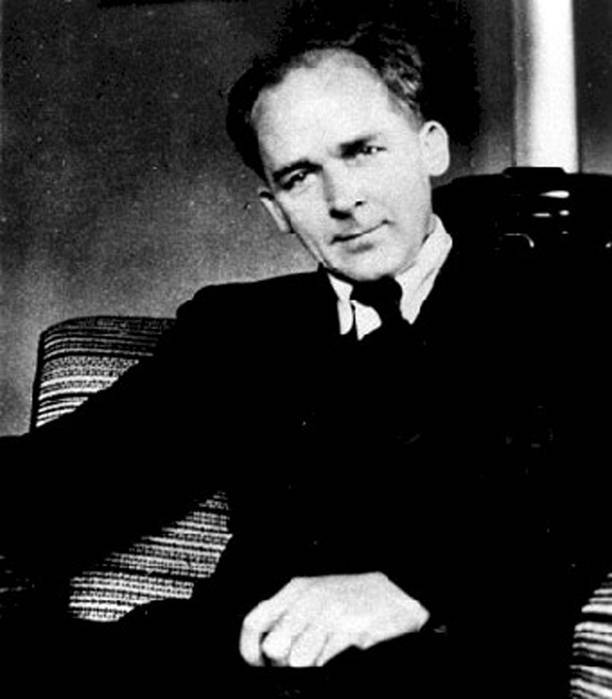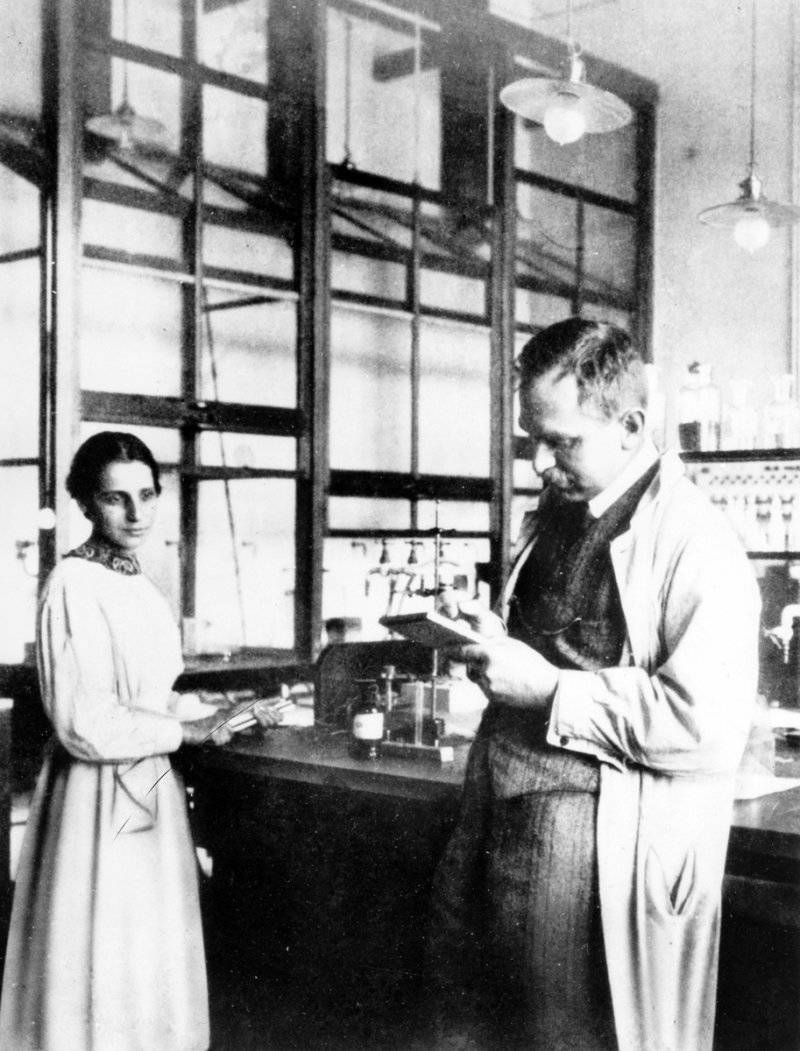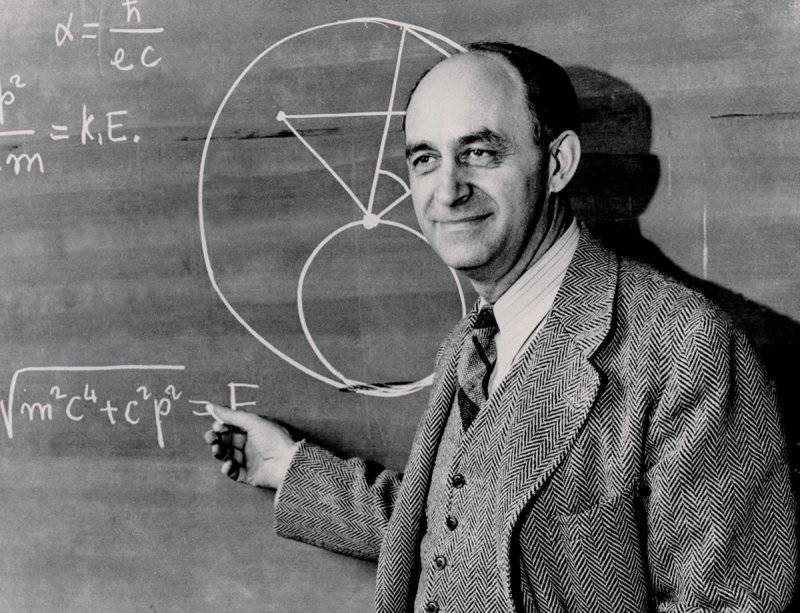The triumph and tragedy of Otto Ghana. Part I
The news of the bombing of Hiroshima and Nagasaki caused Otto Ghana, the discoverer of uranium fission, such a shock that his friends had to be on duty around the clock around the clock for fear of suicide.
Otto Gan was born on 8 in March 1879 of the year in Frankfurt-Main. His father was a craftsman, then became the owner of a small factory and a deputy of the city assembly. The family did not live in misery, but of the four sons only the eldest, Carl, was able to send to the gymnasium. The three youngest and the youngest, Otto, went to a vocational school.
As a teenager, Gan became addicted to spiritualism. But, having read many occult essays, he became convinced of their meaninglessness and never returned to them. Maybe it was then that he was born a deep distrust of any kind of speculative, not amenable to objective verification of knowledge. For the rest of his life, Gan remained indifferent to metaphysical and religious problems.
His real interests were determined late. Otto was little thoughtful about choosing a profession that was lively, inventive for leprosy. He decided to become a chemist only in the senior class, under the influence of lectures by then-famous researcher M. Freund.
In 1897, Gan enters the University of Marburg, in 1901, he defended his thesis on organic chemistry. The university was followed by military service, to which Otto did not find the slightest zeal. Soon after the service, the management of one of the factories decides to take a well-trained, educated young man to work abroad. In the 1904 year, Gan goes to London, intending to study chemistry with V. Ramzai at the same time.
Ramzai was studying radioactive elements at the time and ordered Otto to get a strong radium drug from barium salt. The outcome of the experiment predetermined all further activities of Ghana. The fledgling novice, unexpectedly for himself and his colleagues, discovered a new radioactive substance, which he called a radio radio. When, six months later, his stay in London was over, Ramsay suggested that Ghana should give up work in industry and devote himself entirely to a new, little-known area - radiochemistry. So in the life of Otto Ghana, who still sailed with the flow, a new period began. In the depths of his soul, considering himself to be self-taught, he decided, before returning to Berlin, to undergo an internship with a leading researcher in the field of radioactivity E. Rutherford. Otto’s relationship with science has always been free from greed. Moreover, in those years he worked for Rutherford for free: there were no bets, and the scholarship to the interns was not relied on. He received his first full-time position in 33. Prior to that, he was kept by his parents and brothers, but they paid the costs of the experiments.
Rutherford received Ghana friendly, but said he did not believe in the existence of radio radio. In response, Otto conducted similar experiments with other substances emitting α-particles, and discovered another substance - thorium C, then radioine. In Montreal, at Rutherford, Gan was finally established in the decision to devote himself to radioactivity research. And it's not so much the fact that here he met with physical problems and methods, as in communication with Rutherford. The brilliant, democratic and often noisy Rutherford, not at all like the honorable German professors, became the ideal of Otto. The situation in the laboratory, seriousness in work, free discussion, independence of judgment and open admission of mistakes became a model for the young scientist, which he later sought to achieve in his institute.
Returning to Berlin in 1906, Gan entered the chemical laboratory at the University of Berlin under the supervision of Professor Z. Fisher. An old organic chemist, Fisher considered the most reliable instrument of the researcher "his own nose", and not a counter recording the mysterious rays. But Gan quickly became friends with a circle of young Berlin physicists. Here, September 28 1907, he, an inventive chemist, met the theoretical physicist Lisa Meitner. Since then, they have worked together for three decades. The combination of Gan-Meitner was one of the most successful and fruitful in atomic research.
Otto Gan and Lise Meitner
In 1912, Gan moved to the newly established Chemical Institute of the Kaiser Wilhelm Society (Gan later became director of this institute). Otto's "track record" over the years is impressive. In 1907, a new element was discovered - mesotherium. In 1909, important experiments were carried out to study the effects of recoil. In the year 1913 with the participation of Meitner discovered uranium X2. Despite the brilliant work, the old and cramped wooden workshop building served as a laboratory room. And the path to an academic career for Ghana was long closed. Although in the 1910 year, he received the title of professor, until 1919, radiochemistry was not among the subjects taught in German universities.
In August 1914, Ghana was drafted into the army. At that time, the need to fight did not cause his discord with his conscience. Probably influenced by a surge of nationalist and loyal moods, home education, which made absolute rigorous performance of duty to the Kaiser and the nation, and possibly the romantic notion of war. In the first months of war in Ghana, it seemed that the carelessness of the student years awoke, especially since part of it did not directly participate in the hostilities. At the beginning of 1915, he was offered to engage in the development of toxic substances, and after a short hesitation, he agreed, believed in arguments about the humanity of the new weaponswhich, ostensibly, will bring an end to the war. Most of his colleagues did the same. (However, not all: the German chemist, Nobel laureate of 1915, R. Willstätter, for example, refused.) It was only later that Otto noted with pain: “In essence, what we did then was terrible. But it was.
As you can see, Otto and his colleagues, who regarded his creative life as a chain of brilliant successes, a continuous ascent to the truth, did not reproach. Ghana’s career, according to M. von Laue (German physicist, Nobel Prize winner), can be “likened to a curve that, starting from a high point — from the discovery of a radio-theory, rises higher and higher — to the discovery of a mesotory, reaches its maximum at the time of the discovery of nuclear splitting uranium.
Similar experiments were conducted in Paris at Irene Curie.
Gan, Meitner and young employee Strassmann studied several radioactive isotopes, which were obtained by bombarding uranium or thorium with neutrons, and so improved the method of experiments that in just a few minutes they could isolate the desired radioactive isotope. Arranged the competition. Meitner held a stopwatch in her hand, and Gan and Strassmann took the irradiated drug, dissolved, precipitated, filtered, separated the precipitate and transferred it to the counter. In less than two minutes, they did what usually took two to three hours. Everything that was created in the laboratory of Ghana was considered by the nuclear scientists of the world to be an indisputable truth, they used the terminology of Ghana (by the way, borrowed from the works of D. Mendeleev). Research in the three largest laboratories in the world - in Berlin, Rome (Fermi) and Paris - seemed to leave no doubt that when uranium was irradiated with neutrons, decomposition products contained eka-rhenium and eka-osmium. It was necessary to decipher the ways of their transformations, to determine the half-lives. These elements were considered transuranic. True, in 1938, Irene Curie found an isotope similar to lanthanum in decay products, but she didn’t have enough confidence in this, and she was on the verge of discovering the uranium fission - such a decay that seemed impossible. The energy binding protons and neutrons in the nucleus of an atom was so large that it seemed inconceivable to imagine that only one neutron could overcome it.
What were these processes in reality? They sorted out a little later, but for now the first place was the question of politics. Neutrons and protons had to be forgotten for a while, military marches and bellicose speeches did not bode well. The Jewish woman Lisa Meitner, an Austrian subject, was denied a passport by the German authorities after the Anschluss. Under Nazi law, she also had no right to leave Germany. The only way out for her was escape. Gan asked about the help of Niels Bohr. The Dutch government agreed to accept it without a passport. Lisa collected the most necessary things and went "on vacation" to Holland.
Anxiety and anxiety about leaving Meitner swallowed up almost the entire summer of 1938 for Otto. Autumn has come. That autumn, when Gan and Strassmann made the most important discovery. Experiments and theoretical searches resumed. The absence of Meitner was acutely felt: there was a lack of a sensible adviser and a strict judge, a theorist who would carry out complex calculations.

Gan resorted to the indicator method. Many times used a variety of radioactive indicators, but the result was the same. The radioactive substance, which appeared when uranium was bombarded with slow neutrons, resembled barium in properties; it could not be separated from barium by any chemical method. So Otto Gan and Fritz Strassmann actually discovered the fission of uranium nuclei. Strassmann at that time was 37 years old, and Gan was preparing to celebrate his sixtieth anniversary.
The article was published at the end of 1938 of the year. Simultaneously, Gan sent the results of the experiments to Meitner, awaiting her evaluation. New Year brought a new theory. According to it, the uranium nucleus, when exposed to slow neutrons, should split into two parts, into atoms of barium and krypton. In this case, repulsive forces appear between the newly formed nuclei, whose energy reaches two hundred million electron-volts. This is a tremendous energy that cannot be obtained in other processes. Physics borrowed the term “division” from biology, and the protozoa reproduce in this way. A colleague and nephew of Meitner Frisch, urgently conducting an experiment on the splitting of uranium, confirmed the theory and undertook to write an article.
The results obtained by Hahn and Strassmann so sharply differed from the opinions of the most authoritative scientists that they puzzled the researchers themselves. In Ghana’s letters to Meitner, the words “amazing”, “extremely amazing”, “stunning”, “fantastic results” flash now and then. To make the right conclusion, contrary to the then views, Otto required not only insight, but also exceptional courage. They were given to Ghana with confidence in the purity of the experiment, i.e. in the reliability of the results.
The events of just a few days, which took place in the largest scientific centers of the United States of America, may well serve as a scenario for an exciting adventure film.
Unaware that the discovery of Ghana, Strassmann and Meitner must be kept secret, the closest collaborator Bora Rosenfeld arrives in Princeton (USA) and ends up at a physicist party at the university club. He is bombarded with questions: what's new in Europe? Rosenfeld talks about the experiences of Ghana and Strassmann and the theoretical conclusions of Meitner and Frisch. At the meeting, present employee Fermi; that night he goes to New York, breaks into Fermi's office and reports news. After a few minutes, Fermi begins to develop a project of upcoming experiments. First you need to reproduce the process of fission of the uranium nucleus, then measure the energy released. Fermi realizes that he missed five years ago when he first bombarded uranium with slow neutrons.
Enrico Fermi
In the basement of Columbia University, the uranium nucleus is being divided, not knowing that Frish has already conducted a similar experiment. Hastily (hurrying to stake someone else's discovery behind them) a message is being prepared for the journal Nature.
When Bor learns about the leakage, he is worried that someone will be ahead of Meitner and Frish. Then they will be in the position of appropriating someone else's discovery. At a congress in Washington, Bor learns that Fermi’s experiments on the fission of uranium nuclei are in full swing, and he is sending telegrams to Copenhagen Frish to immediately publish the results of experiments. The next day, the latest issue of the magazine appeared with an article from Ghana and Strassmann. The same day, the consolation message came - Frish sent the article to the press. Now Bor is calm and can tell everyone about the uranium division. Even before he finished speaking, several people left the hall and almost ran to the Carnegie Institute, to a powerful accelerator. It was necessary to immediately change the target and investigate the fission of the uranium nucleus.
The next day, Bora and Rosenfeld were invited to Carnegie Institute. For the first time, Bor saw a fission process on an oscilloscope screen.
At the same time in Paris, the couple Joliot-Curie observed the decay of uranium and thorium nuclei, calling this decay an "explosion." Frederick's article appeared only two weeks later, by Meitner and Frisch. Thus, in less than a month, four laboratories (in Copenhagen, New York, Washington and Paris) carried out the division of the uranium nucleus and showed that enormous energy is released. But few people knew that there was a fifth laboratory - at the Polytechnic Institute in Leningrad, where the theory of uranium nucleus fission was also developed.
To be continued ...
Использованная литература:
1. Gernek F. Pioneers of the Atomic Age. M .: Progress, 1974. C. 324-331.
2. Konstantinova S. Splitting. // Inventor and innovator. 1993. No.10. C. 18-20.
3. Khramov Yu. Physics. Biographical directory. M .: Science. 1983. C. 74.


Information